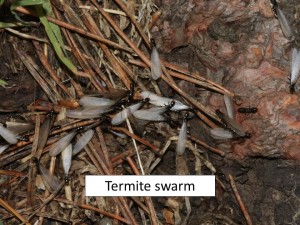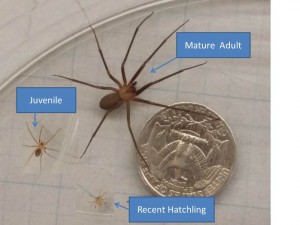— by Dr. Raymond Cloyd
For those of you that have been stocking-up on the toilet paper during the COVID-19 crisis I have some bad news…there are insects (“bugs”) that will actually feed on toilet paper. Some insects actually have an affinity for toilet paper that may be related to the “softness,” which makes it easier for the insects to chew on the toilet paper sheets. One of these insects is the silverfish [Order: Zygentoma (Thysanura)], which is grayish-white, segmented, elongated, and approximately 3/4 inches (19 mm) long. Silverfish have two antennae that move back and forth in motion and there are three long tails or bristles protruding from the back of the abdomen. In addition to silverfish, cockroaches, termites, and booklice may occasionally enjoy munching on toilet paper sheets. Silverfish will start feeding on the outer edges of the toilet paper and move inward.
Most people keep their stockpile of toilet paper in the basement. However, this is a prime environment for silverfish development and reproduction since, in general, basements are humid and damp. The higher the humidity, the faster silverfish will develop and reproduce. In general, the life cycle (egg to adult) takes three to four months. Toilet paper that is stacked on shelves next to a wall provides a nice “buffet” for silverfish.
By the way, the guns and ammunition that are stockpiled will not provide any assistance against toilet paper eating “bugs.” However, below are ways to protect your valuable toilet paper from silverfish and other “bugs:”
- Keep all toilet paper in the original packaging.
- Place toilet paper in PVC tubes similar to the ones used for drainage that will allow you to stack the toilet paper rolls on top of each other. Be sure to seal both ends to exclude silverfish and other “bugs” from getting at the toilet paper.
- Place toilet paper in a heavy-duty plastic garbage container with a tight-sealing lid. In addition, you can place mothballs in the bottom of the container to repel any “bugs.”
- Place toilet paper in heavy-duty Tupperware containers with tight-sealing lids. Again, placing mothballs inside may help to repel any “bugs” from munching on the rolls of toilet paper.
- Place diatomaceous earth (DE) around stacks of toilet paper to create a barrier. However, make sure there are no gaps in the barrier that silverfish or other “bugs” can get through. If a silverfish or even a cockroach tries to cross the DE barrier, their cuticle will be ruptured leading to a loss of water (dehydration)…and they will die!
Well, I hope this article will help everyone to sustain the usefulness of their toilet paper so that when you have to go…you do not find out too late…that a silverfish or other “bug” has enjoyed your toilet paper before you can use it!

